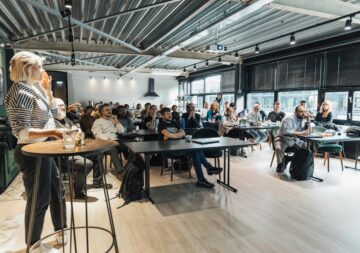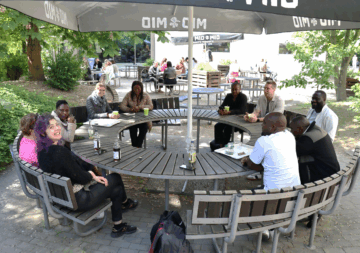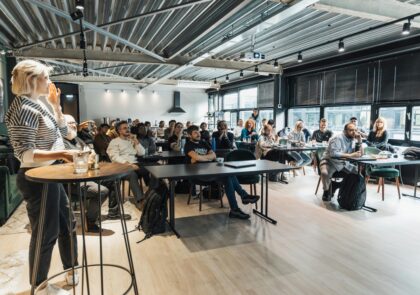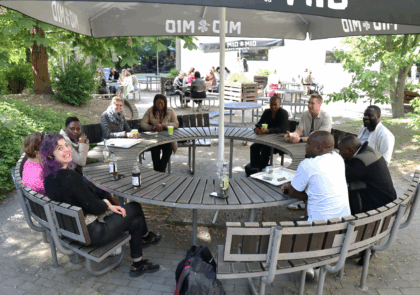
Tourism in Finnish Lakeland, particularly in its coastal areas, is a significant component of Finland’s travel industry. What sets this region apart is its unique blend of natural beauty, cultural experiences, and various outdoor activities. Renowned for its vast waterways and thousands of islands, it offers a prime example of integrating environmental sustainability with tourist appeal. This ensures visitors can enjoy the pristine landscapes while contributing to their preservation, making it a destination that promises a truly unique and exciting experience.
Author: Johanna Heinonen
Natural Beauty and Recreational Opportunities
The pristine waters of Finnish Lakeland, stretching from mid-Finland to the eastern parts, e.g. South Karelia, offer a diverse range of activities that attract visitors from all over the world. In the warmer months, the lakes come alive with boating, sailing, and fishing, with the waters teeming with species like pike, perch, and salmon. The region’s beaches provide perfect spots for swimming and sunbathing. As winter sets in, the landscape transforms into a snowy wonderland, ideal for ice fishing, snowmobiling, and Nordic skiing. (Visit Finland n.d.a.)
Cultural attractions also play a crucial role in drawing tourists. The Savonlinna Opera Festival in Savonlinna, the Black and White Theatre Festival in Imatra and the sandcastles in Lappeenranta are just examples of the cultural pearls in Eastern Lakeland. The local Karelian culture offers deep immersion through traditional Finnish saunas and craft workshops, enriching the visitor experience with Finnish traditions. The title and theme years of the European Region of Gastronomy emphasise the unique local cuisine and food culture. (Visit Finland n.d.a; GoSaimaa n.d.a; Taste Saimaa n.d.)
Sustainable Practices of Lakeland
Accommodation in Finnish Lakeland caters to a range of preferences. From secluded lakeside cottages that offer direct access to nature to luxurious hotels and resorts with spas and fine dining, there is something for everyone. Camping sites also abound, allowing visitors to connect closely with the environment. (GoSaimaa n.d.b.)
Its strong emphasis on sustainable practices is central to the region’s tourism strategy. These practices are not just a part of the strategy; they are the strategy. They are critical in maintaining the lakes’ natural beauty and surroundings. This includes promoting eco-friendly activities such as responsible fishing and low-impact boating and ensuring that accommodation facilities minimise their environmental footprint. These efforts are designed to preserve the natural environment and enhance the quality and authenticity of the tourist experience, reassuring you that your visit will not harm the environment. (GoSaimaa n.d.c.)
Sustainable Travel Finland Program and Its Impact on Lakelands
The Sustainable Travel Finland (STF) program, initiated by Visit Finland, is pivotal in bolstering sustainability efforts throughout the country, including Finnish Lakeland. This comprehensive program provides tourism companies and destinations a concrete toolkit for developing sustainable practices. It covers everything from management and social accountability to cultural impacts and environmental issues. (Visit Finland n.d.b.)
In South Karelia, the STF program has been instrumental in helping local businesses align their operations with global sustainability standards. Companies participating in the program must undergo a rigorous assessment, receive training in sustainable practices, and continually monitor and develop their activities. This ensures that they contribute positively to their environment and offer tourists authentic and environmentally responsible experiences. (GoSaimaa n.d.c; n.d.d.)
Adopting the STF program in Finnish Lakeland has opened up numerous regional opportunities for companies and even for cooperation with the LAB University of Applied Sciences. It has enhanced its appeal to a growing segment of eco-conscious travellers, prioritising destinations that demonstrate environmental responsibility. This shift towards sustainable tourism has helped protect the region’s natural resources and created economic opportunities by attracting international visitors looking for sustainable travel options. Moreover, the program has fostered community and collaboration among businesses as they work together to achieve sustainability goals. This cooperative approach has led to innovations in sustainable tourism products and services, further enhancing the visitor experience and ensuring the long-term viability of the tourism sector. With the help of development projects and students helping with the STF activities, LAB has provided valuable assistance in evolving sustainability in the area.
While the benefits of sustainable tourism are significant, including environmental protection and enhanced visitor experiences, its challenges are equally formidable. Implementing sustainable practices can lead to higher operational costs and may require more extensive infrastructure and regulatory frameworks. This can make the region less competitive economically compared to less regulated destinations. Moreover, sustainable tourism can limit infrastructure development to minimise environmental impacts, potentially restraining the growth of the tourism industry during peak demand. The complexity of managing sustainable tourism involves ongoing adaptation and monitoring, demanding substantial resources and commitment from local stakeholders. Furthermore, cultural dilution is risky as the interaction between locals and a diverse tourist population might lead locals to modify traditional practices to cater to tourist expectations. This adaptation can sometimes erode the authenticity of the cultural experiences offered. These are also the pain points in which the different departments of LAB can offer their versatile knowledge to the field and industries to gain sustainability goals in the best possible manner.
References
GoSaimaa. n.d.a. Tapahtumat Lappeenrannan ja Imatran seudulla. Cited 12.4.2024. Available at https://gosaimaa.com/mita-tehda/tapahtumat/
GoSaimaa. n.d.b. Löydä uniikki majoitus Saimaalla. Imatra ja Lappeenranta tarjoavat majoitusta moneen makuun. Cited 12.4.2024. Available at https://gosaimaa.com/suunnittele-lomasi/majoitus/
GoSaimaa. n.d.c. GoSaimaa – Vastuullisuus. Cited 12.4.2024. Available at https://gosaimaa.com/vastuullisuus/
Visit Finland. n.d.a. Welcome to Lakeland. Cited 12.4.2024. Available at https://www.visitfinland.com/en/places-to-go/lakeland/
Visit Finland. n.d.b. For responsible travel. Cited 12.4.2024. Available at https://www.visitfinland.fi/en/liiketoiminnan-kehittaminen/vastuullinen-matkailu/sustainable-travel-finland
Taste Saimaa. n.d. Saimaa is the European Region of Gastronomy 2024. Cited 12.4.2024. Available at https://www.tastesaimaa.fi/en/saimaa-european-region-of-gastronomy
Author
Johanna Heinonen is a Senior Lecturer and RDI Specialist at LAB University of Applied Sciences. She is particularly passionate about studying how destination management, communication in different forms and its effectiveness. She is also Visit Finland’s STF trainer.
Illustration: Visit Saimaa. 2017. Saimaa ringed seal. Viitattu 29.4.2024. Available https://saimaa.kuvat.fi/kuvat/Saimaa+Ringed+Seal/Saimaa+ringed+seal+Visit+Saimaa.jpg
Published 29.4.2024
Reference to this article
Heinonen, J. 2024. Embracing Sustainability in Finnish Lakeland Tourism. LAB Pro. Cited and the date of citation. Available at https://www.labopen.fi/lab-pro/embracing-sustainability-in-finnish-lakeland-tourism/






